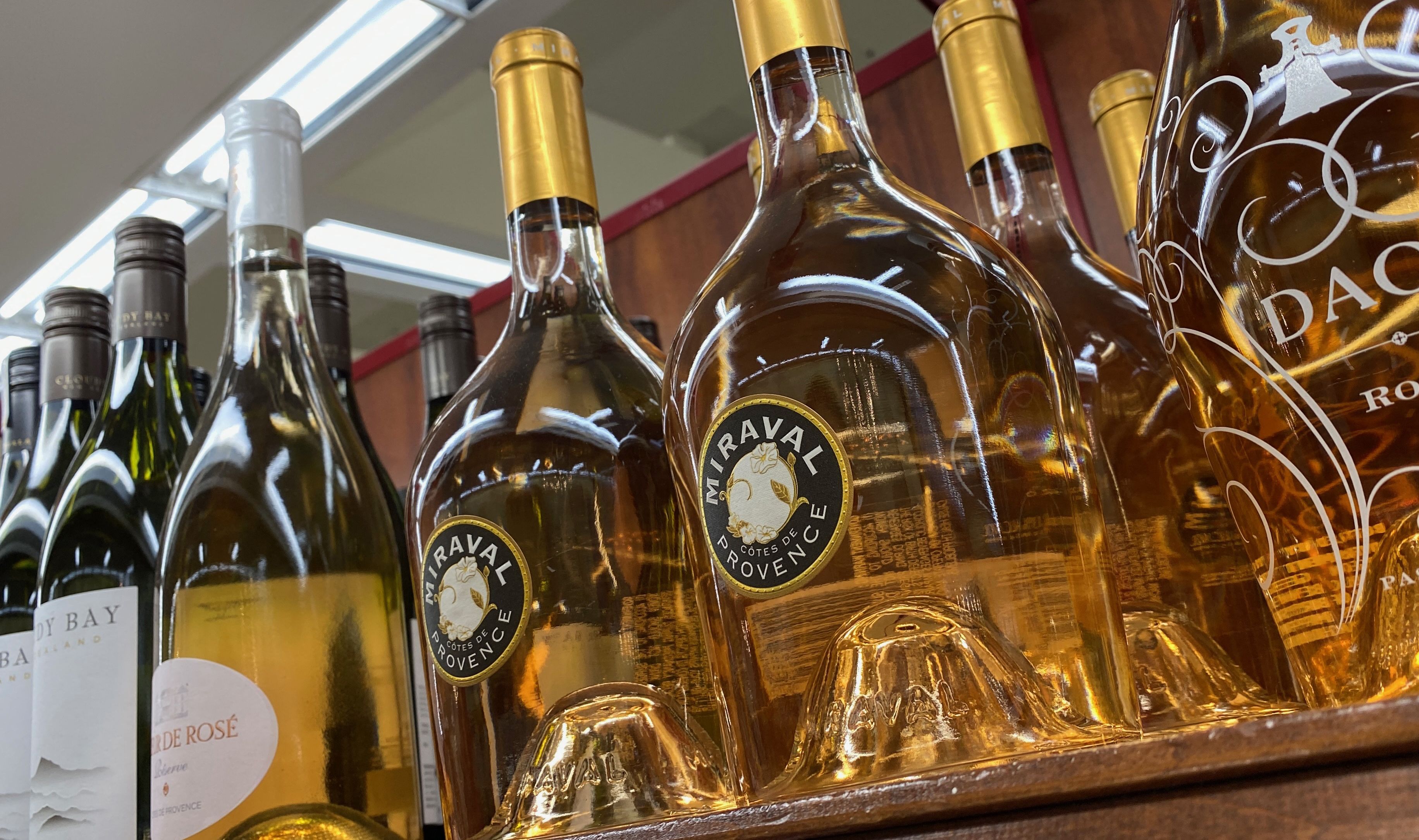‘The live, laugh, love of wine’: is rosé the new chardonnay?
Rosé has boomed in popularity over the past decade or so, but not all winemakers are happy about its newfound ubiquity. Is the bubble about to burst, asks Katie Rosseinsky?


Your support helps us to tell the story
From reproductive rights to climate change to Big Tech, The Independent is on the ground when the story is developing. Whether it's investigating the financials of Elon Musk's pro-Trump PAC or producing our latest documentary, 'The A Word', which shines a light on the American women fighting for reproductive rights, we know how important it is to parse out the facts from the messaging.
At such a critical moment in US history, we need reporters on the ground. Your donation allows us to keep sending journalists to speak to both sides of the story.
The Independent is trusted by Americans across the entire political spectrum. And unlike many other quality news outlets, we choose not to lock Americans out of our reporting and analysis with paywalls. We believe quality journalism should be available to everyone, paid for by those who can afford it.
Your support makes all the difference.Rosé season is on the approach. Bottles of the pink stuff will once more be a fixture in pub gardens everywhere. They’ll be decanted into paper cups for park picnics, bought in bulk for hen parties and Instagrammed from poolside sun loungers (probably captioned with some variant of the phrase “rosé all day”). But over in the south of France, the drink’s spiritual home, trouble is brewing behind the scenes.
You could call it the war of the rosés. Purists are claiming that their upstart rivals are diluting the drink’s reputation by jumping on the lucrative trend for pale rosé (think Whispering Angel and its many, many imitators). The old guard reckons these lighter-hued drinks are insipid and underwhelming in both looks and taste, and believe they are giving rosé a bad name. These lighter, blush-coloured versions are also now so ubiquitous that they’re seen as a bit, well, basic (and I say that as a rosé devotee myself). Thanks to the array of rosé-inflected slogans you can find on T-shirts, phone cases, tote bags or even special sparkly drinking flutes, it’s practically the “live laugh love” of wine.
The traditionalists have banded together to form L’Association Internationale des Rosés de Terroirs, a group dedicated to promote “the aristocracy of rosé”, wines they believe have a more interesting, nuanced range of flavours. Éric de Saint Victor, owner of Provence’s Château de Pibarnon, cautioned drinkers to “be careful” as “rosé is not what they would have you believe. The rosé that most people drink is like an [ordinary] sparkling wine that the winemaker pretends is a champagne.” The sticklers have even come up with a name for the object of their disdain – “swimming pool rosé”. Of course, this would actually be quite a decent brand name for precisely the sort of millennial-friendly bev they’re railing against. You can almost picture it written in sans-serif font on the bottle.
How did this crowd-pleasing tipple become so divisive? It seems like some winemakers believe rosé has become too successful for its own good – which is pretty ironic, given that it took a fair while for rosé to acquire its reputation as the unofficial drink of lazy summer afternoons. Many winemakers once considered it inferior, a way to use up sub-standard grapes that weren’t good enough to go into a red. Rewind back to the Eighties, and your rosé options were limited to super-sweet Mateus, with its vibrant pink hue and curved bottle, and a handful of sickly white (but actually pink!) zinfandels that tasted a bit like alcoholic Ribena. It wasn’t seen as something that “serious” wine drinkers would deign to sip on.
But in the Noughties, the pink tide started to turn. Pale, Provençal dry rosé provided an alternative to those heavier, sweeter wines. Leading the charge was Whispering Angel, made at Provence’s Château d’Esclans; the chateau’s owner Sacha Lichine turned out to be a marketing wizard, ensuring that his wine ended up on the menu at celeb-friendly haunts on both sides of the Atlantic, like the Chateau Marmont and Soho House. Of course, the fact that drinking pale pink wine could be sold as something classically French, and therefore synonymous with sophistication, certainly helped its success. See also: the “French girl chic” industrial complex, which I’m convinced was invented to lure gullible shoppers into buying boring stripy tops under the delusion that they’re “Breton”.
Rosé is a comparatively cheap and quick wine to make, so increasing numbers of vineyards wanted to get in on the game. And so did celebrities, including Brad Pitt and Angelina Jolie, who launched their first bottles of Miraval Rosé in 2013 and sold out in a matter of hours (latecomers to the rosé-making game also include Kylie Minogue, Post Malone and Jon Bon Jovi). The following year, rosé was so popular with monied holiday-makers in the Hamptons that bars and restaurants in the area nearly ran out completely (“Rosé running dangerously low!” one headline screamed). This was all happening when Instagram was on the rise, ushering in the era of the influencer – and there are still few drinks more photogenic than a glass of blush-coloured rosé held up against a blue sky.
Its popularity has only continued to increase since then: analysts at GlobalData have estimated that by 2025, 2.63 billion litres of the stuff will be consumed worldwide. But as demand for rosé gets bigger, inevitably other wines must take the hit. Last year, it emerged that red wine sales in France have dropped by around 50 per cent since the Nineties (of course, that’s not just because rosé has encroached on its territory: experts cite a whole host of factors, including diet and lifestyle changes). No wonder some winemakers from the Bordeaux region, who’d previously poured all their efforts into producing their trademark reds, have decided to expand their horizons and go after the booming rosé market. It’s a move that has really provoked the ire of their Provençal counterparts: Éric de Saint Victor (he of the “rosé aristocracy”) singled out the region’s efforts as “a bit simple [and] not extraordinary”. Devastating.

Even outside the vineyards of France, though, you get the sense that a rosé backlash has been building for a while, even as its popularity reaches new heights (would it be far-fetched to call it the Taylor Swift of wines? Either way, the singer is certainly a fan – her brand of choice is called Gaslighter, made by the band The Chicks). With its slew of slightly forced hashtags (“yes way rosé!”), it’s essentially the summer sibling of the pumpkin spice latte.
Just like fashion, wine follows a trend cycle, albeit one that moves at a slightly slower pace. Remember when chardonnay became so ubiquitous that it was considered the epitome of tacky (case in point: the writers of ITV’s bonkers Footballers’ Wives named one of their main characters in honour of it)? It’s since made a quiet comeback. So even if dry rosé is deemed beyond the pale by arbiters of taste, it surely won’t be considered passé for too long. And frankly, if you like it, who cares if it’s considered uncool? In the meantime, you’ll find me in the wine aisle buying up Kylie’s finest vintage like it’s going out of fashion.
Join our commenting forum
Join thought-provoking conversations, follow other Independent readers and see their replies
Comments